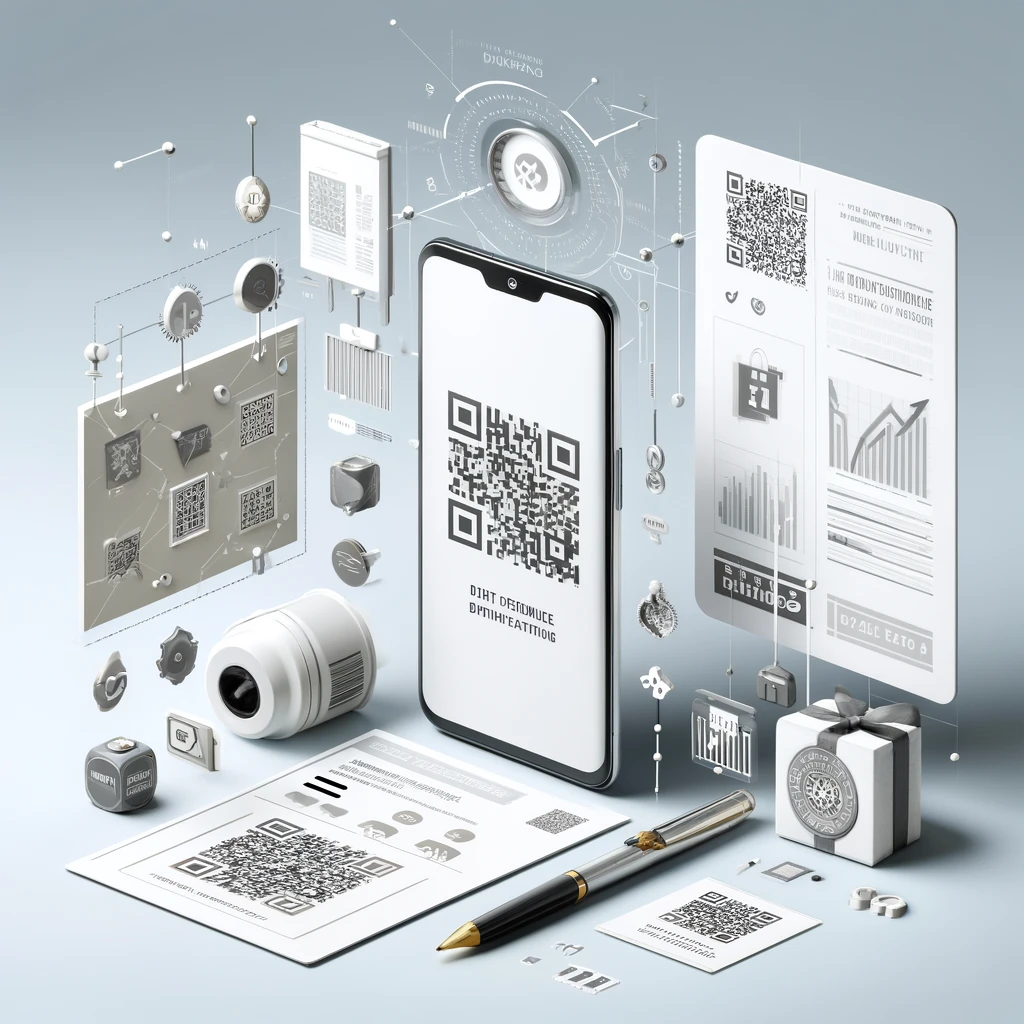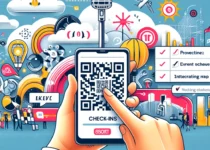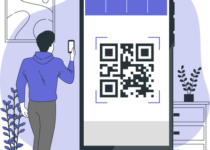Top 10 Creative Uses for QR Codes in Marketing

Introduction
QR codes have revolutionized marketing by providing a seamless bridge between the physical and digital worlds. Their versatility and ease of use make them a powerful tool for engaging customers in innovative ways. In this post, we’ll explore ten creative uses for QR codes in marketing that can help your business stand out and attract more customers.
1. Business Cards
- Dynamic Contact Sharing: Traditional business cards are often limited in the amount of information they can convey. By replacing them with QR codes, you can provide a wealth of digital information, including your name, job title, contact details, and links to social media profiles or websites. Recipients can easily scan the QR code to save your contact information directly to their smartphones, reducing the risk of losing important contact details.
2. Product Packaging
- Enhanced Product Information: QR codes on product packaging can significantly enhance the customer experience by providing detailed product information that can’t fit on a label. For instance, a QR code on a food product can link to nutritional information, recipes, and sourcing details. For electronics, QR codes can provide user manuals, troubleshooting guides, and customer reviews. This additional information can help customers make informed purchasing decisions and increase their satisfaction with the product.
3. Print Advertisements
- Interactive Ads: Print ads have their limitations, but QR codes can transform them into interactive experiences. A QR code on a print ad can direct readers to a video demonstration, a landing page with more detailed information, or a special offer page. This interactivity not only engages readers but also provides measurable results, as you can track how many people scan the code and engage with the content.
4. Event Promotions
- Event Details: Promoting events with QR codes can streamline the process for both organizers and attendees. QR codes on posters and flyers can link to event pages with comprehensive details, including schedules, speaker bios, and registration forms. Attendees can quickly scan the code to get all the information they need, which increases the likelihood of participation. Moreover, using QR codes for registration can automate attendee data collection and streamline check-in processes.
5. In-store Signage
- Exclusive Offers: In-store signage with QR codes can offer customers exclusive discounts or access to loyalty programs. For example, placing QR codes near new products or seasonal displays can entice customers to scan for a special discount. This not only encourages sales but also enhances the shopping experience by providing instant rewards.
6. Email Campaigns
- Direct Links: Including QR codes in email campaigns can increase engagement by providing direct links to product pages, surveys, or promotional videos. Instead of clicking through multiple links, recipients can simply scan the QR code to access the content. This convenience can lead to higher click-through rates and better engagement with your email content.
7. Social Media Integration
- Boost Followers: QR codes can simplify the process of gaining social media followers. By linking QR codes directly to your social media profiles, you make it easy for customers to follow you. This can be particularly effective at events or in-store, where customers can quickly scan the code and follow your profiles on platforms like Instagram, Facebook, and Twitter. This not only increases your follower count but also builds a more engaged online community.
8. Customer Feedback
- Instant Surveys: Gathering customer feedback is crucial for improving products and services. Placing QR codes on receipts or product packaging that link to online surveys can make it easy for customers to share their opinions. This instant feedback mechanism can provide valuable insights into customer satisfaction and areas for improvement. Offering a small incentive, such as a discount on their next purchase, can further encourage participation.
9. Location-Based Marketing
- Store Locator: QR codes can be an effective tool for location-based marketing. By placing QR codes on advertisements or websites that link to maps showing the nearest store locations, you can help customers find your business easily. This is particularly useful for businesses with multiple locations, as it directs customers to the most convenient store based on their current location.
10. Augmented Reality (AR)
- Interactive Experiences: Integrating QR codes with augmented reality can create immersive and interactive experiences for customers. For example, a QR code on a fashion item can enable virtual try-ons, where customers can see how the item would look on them through their phone’s camera. Similarly, QR codes on product packaging can trigger 3D product demonstrations, providing a more engaging way to explore the features and benefits of the product.
Best Practices for QR Code Marketing
- Clear Call to Action
- Instructions: Ensure your QR codes come with a clear call to action (CTA) that informs users what they will gain by scanning the code. For instance, “Scan to Save 20%” or “Scan for More Info” can significantly increase the scan rate and engagement.
- Design and Placement
- Visibility: Make your QR codes visually appealing and strategically place them where they are easily noticeable and accessible to your target audience. Consider factors like lighting, placement height, and crowd flow when positioning your codes.
- Testing and Functionality
- Usability: Regularly test your QR codes to ensure they work correctly across different devices and scanners. This prevents user frustration and ensures a smooth experience.
- Analytics and Optimization
- Performance Tracking: Use analytics tools to track the performance of your QR codes. Analyze the data to understand which campaigns are most effective and optimize your strategies accordingly.
Case Studies
- Retail Promotion:
- Fashion Retailer: A leading fashion retailer implemented QR codes on in-store signage to offer exclusive discounts. Customers scanned the codes to receive a coupon, which could be applied at checkout. This strategy resulted in a 25% increase in sales and higher customer engagement, as shoppers were motivated by the immediate rewards.
- Restaurant Menu:
- Digital Menus: A restaurant replaced physical menus with QR codes that linked to an online menu. This approach reduced printing costs and allowed for easy updates to the menu. During the COVID-19 pandemic, this strategy also enhanced safety by minimizing physical contact. Customers appreciated the convenience and the ability to access the menu on their own devices.
- Product Launch:
- Tech Company: A tech company used QR codes in a product launch campaign to direct users to an augmented reality (AR) experience. By scanning the QR code, users could explore the new product in 3D, interacting with its features in a virtual space. This innovative approach generated significant buzz and increased online engagement, as customers were excited to experience the product in a new way.
Conclusion
QR codes are a versatile and powerful tool for enhancing your marketing efforts. By integrating them creatively into your campaigns, you can engage customers in new and exciting ways, drive traffic to your online platforms, and gather valuable data to refine your strategies. Start leveraging the potential of QR codes with My-QRC.com, your ultimate free QR code generator, and take your marketing to the next level.
Explore the full potential of QR codes with My-QRC.com. Start creating today and discover how this versatile technology can transform your marketing efforts.


